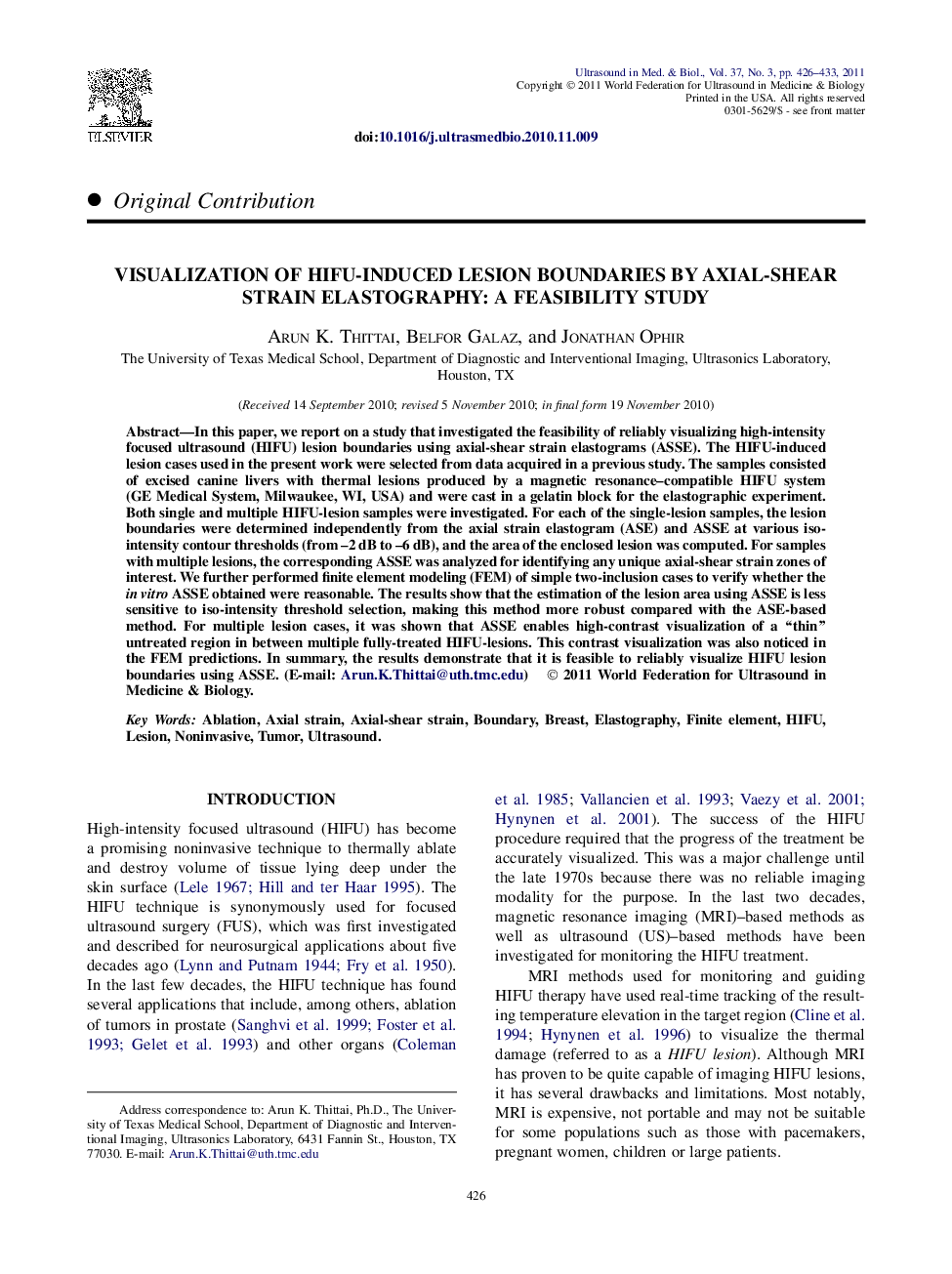| Article ID | Journal | Published Year | Pages | File Type |
|---|---|---|---|---|
| 10692230 | Ultrasound in Medicine & Biology | 2011 | 8 Pages |
Abstract
In this paper, we report on a study that investigated the feasibility of reliably visualizing high-intensity focused ultrasound (HIFU) lesion boundaries using axial-shear strain elastograms (ASSE). The HIFU-induced lesion cases used in the present work were selected from data acquired in a previous study. The samples consisted of excised canine livers with thermal lesions produced by a magnetic resonance-compatible HIFU system (GEÂ Medical System, Milwaukee, WI, USA) and were cast in a gelatin block for the elastographic experiment. Both single and multiple HIFU-lesion samples were investigated. For each of the single-lesion samples, the lesion boundaries were determined independently from the axial strain elastogram (ASE) and ASSE at various iso-intensity contour thresholds (from -2 dB to -6 dB), and the area of the enclosed lesion was computed. For samples with multiple lesions, the corresponding ASSE was analyzed for identifying any unique axial-shear strain zones of interest. We further performed finite element modeling (FEM) of simple two-inclusion cases to verify whether the in vitro ASSE obtained were reasonable. The results show that the estimation of the lesion area using ASSE is less sensitive to iso-intensity threshold selection, making this method more robust compared with the ASE-based method. For multiple lesion cases, it was shown that ASSE enables high-contrast visualization of a “thin” untreated region in between multiple fully-treated HIFU-lesions. This contrast visualization was also noticed in the FEM predictions. In summary, the results demonstrate that it is feasible to reliably visualize HIFU lesion boundaries using ASSE. (E-mail: Arun.K.Thittai@uth.tmc.edu)
Keywords
Related Topics
Physical Sciences and Engineering
Physics and Astronomy
Acoustics and Ultrasonics
Authors
Arun K. Thittai, Belfor Galaz, Jonathan Ophir,
